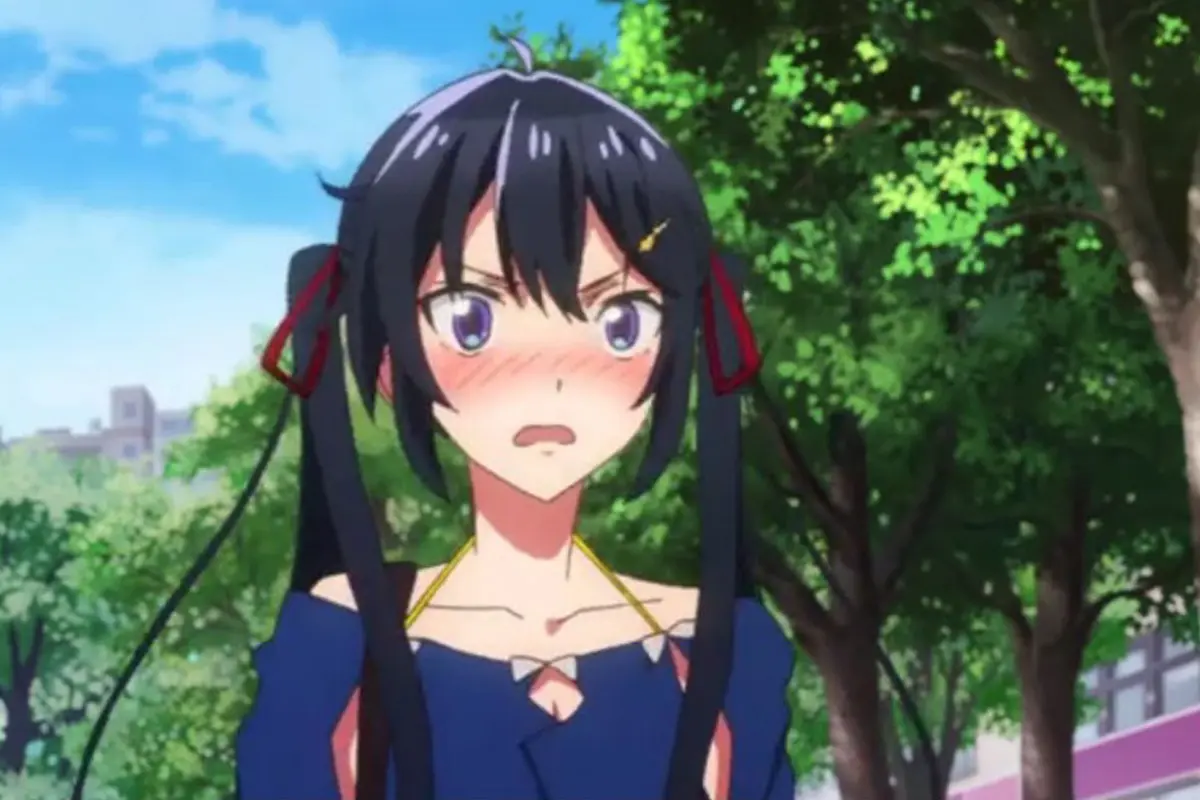
It’s not like I like you or anything… b-baka! — Classic Tsundere Line
What’s a Tsundere? Understanding Anime’s Most Lovable Contradiction
If you’ve watched even a few episodes of anime, chances are you’ve encountered a character who’s cold one moment and blushing the next. Welcome to the world of tsundere—one of the most beloved (and misunderstood) character archetypes in Japanese media.
So, what’s a tsundere, exactly?
In simple terms, a tsundere is a character who is initially hostile, aloof, or combative toward someone they secretly care about, only to gradually reveal a softer, more affectionate side. The word is a portmanteau of two Japanese terms:
- “Tsuntsun” (ツンツン): to turn away in disgust or act prickly.
- “Deredere” (デレデレ): to become affectionate, lovey-dovey, or openly emotional.
This blog explores the psychology, cultural roots, top examples, and even how tsundere traits appear in real life. Plus, we’ll examine how this character type helps language learners connect with Japanese media on a deeper level.
Table of Contents
Open Table of Contents
- The Origin of the Term “Tsundere”
- Defining Characteristics of a Tsundere
- Why Tsunderes Are So Popular
- Famous Tsundere Characters in Anime
- Types of Tsunderes: Classic vs. Modern
- Is Tsundere a Stereotype or a Real Personality?
- Tsundere in Japanese Language and Culture
- Using “Tsundere” in Daily Japanese
- Learning Japanese Through Tsundere Characters
- Conclusion: The Lasting Appeal of Tsunderes
- 🔗 Related Reading
The Origin of the Term “Tsundere”
The term “tsundere” first gained traction in Japanese visual novels and dating sims around the early 2000s. It quickly migrated into anime fandoms thanks to iconic characters like Asuka Langley from Neon Genesis Evangelion and Rin Tohsaka from Fate/stay night.
The popularity exploded with the emergence of fan forums and wikis categorizing every character’s personality type. Soon, the “tsundere” label became a badge of honor—and even a meme.
Defining Characteristics of a Tsundere
Not every cold or shy character qualifies as a tsundere. Here’s a breakdown of common traits:
- Hot-and-cold behavior: One minute they’re yelling, the next they’re stammering with a blush.
- Harsh words masking soft emotions: “Idiot!” is code for “I care.”
- Easily embarrassed: Especially when feelings are exposed.
- Reluctant kindness: They’ll go out of their way to help… but deny it.
- Emotional growth arc: Many tsunderes show character development over time.
Why Tsunderes Are So Popular
From a storytelling standpoint, tsunderes are dynamic and compelling:
- Conflict and tension: The love-hate drama keeps audiences hooked.
- Emotional payoff: Watching a guarded character open up feels rewarding.
- Comedy value: Their emotional outbursts often drive the humor.
From a fan’s perspective, tsunderes provide both fantasy fulfillment and relatability. Many people feel uncomfortable expressing emotions openly—making tsundere behavior oddly human.
Famous Tsundere Characters in Anime
Here are some of the most iconic tsunderes in anime history:
| Character | Anime | Signature Trait |
|---|---|---|
| Taiga Aisaka | Toradora! | Pocket-sized rage queen with a secret sweet tooth |
| Rin Tohsaka | Fate/stay night | Tsundere perfection in heels and magic |
| Asuka Langley | Evangelion | Brash, brilliant, and broken |
| Kagome Higurashi | Inuyasha | Arrows and attitude |
| Misaki Ayuzawa | Maid-sama! | Strict student president with a soft heart |
Want more character examples? Check out this breakdown of anime personalities.
Types of Tsunderes: Classic vs. Modern
The tsundere archetype has evolved. Let’s explore the two main types:
🧱 Classic Tsundere (Type A)
- Tsun comes first, dere comes much later.
- Think: harsh, aggressive, full-blown insults.
- Example: Akane Tendo from Ranma ½
💡 Modern Tsundere (Type B)
- Softer blend of tsun and dere from the beginning.
- Think: awkward denial, blushing, stammering.
- Example: Kurisu Makise from Steins;Gate
Is Tsundere a Stereotype or a Real Personality?
While “tsundere” is largely a fictional trope, some psychologists argue it mirrors avoidant attachment styles—where people hide vulnerability to avoid being hurt.
In Japan, being overly emotional in public is often frowned upon. Tsundere characters express love while preserving social face, reflecting a subtle cultural tension.
Tsundere in Japanese Language and Culture
The word “tsundere” has even made its way into casual slang among Japanese youth. You might hear someone say:
「あの子、ツンデレだね!」
“That girl is such a tsundere!”
It’s also used ironically or teasingly—like calling someone tsundere when they won’t admit they miss you.
Using “Tsundere” in Daily Japanese
Want to sound like a native? Here are some casual Japanese expressions built around tsundere ideas:
| Phrase | Translation | Use Case |
|---|---|---|
| ツンツンしてる | Acting cold/prickly | “You’re being so tsuntsun today.” |
| デレデレしてる | Acting lovey-dovey | “Stop being so deredere in public!” |
| ツンデレすぎ! | So tsundere! | When someone switches moods |
Learning Japanese Through Tsundere Characters
Believe it or not, tsundere characters can be a great resource for learning:
- Everyday phrases: You’ll pick up casual speech like “baka” or “urusai.”
- Tone and emotion: Voice acting teaches subtle cues.
- Cultural nuance: Understand how emotions are expressed in Japan.
Try watching shows like Toradora!, Kaguya-sama: Love Is War, or Clannad with Japanese subtitles for immersion.
Conclusion: The Lasting Appeal of Tsunderes
Whether you find them charming or exhausting, tsunderes have left an undeniable mark on anime, pop culture, and even language learning. Their emotional complexity, dramatic arcs, and uniquely Japanese flair make them a character type that continues to inspire fans globally.
So next time you hear a blushing anime character mutter “It’s not like I like you or anything…”, just smile—you know exactly what’s a tsundere.